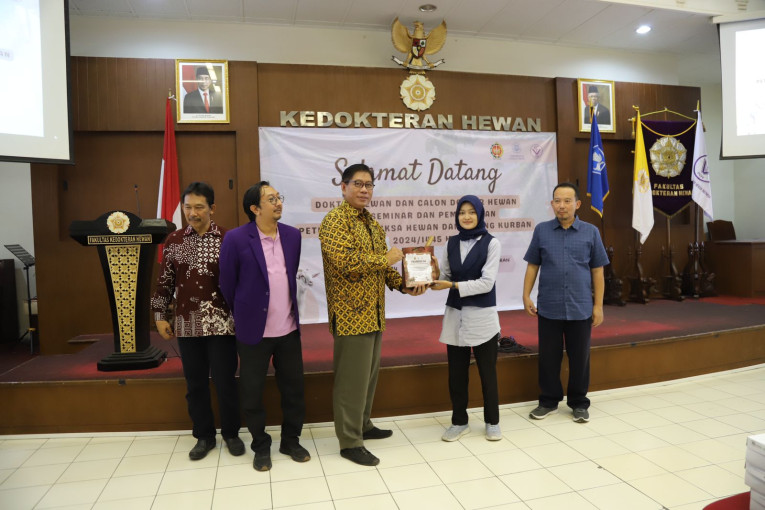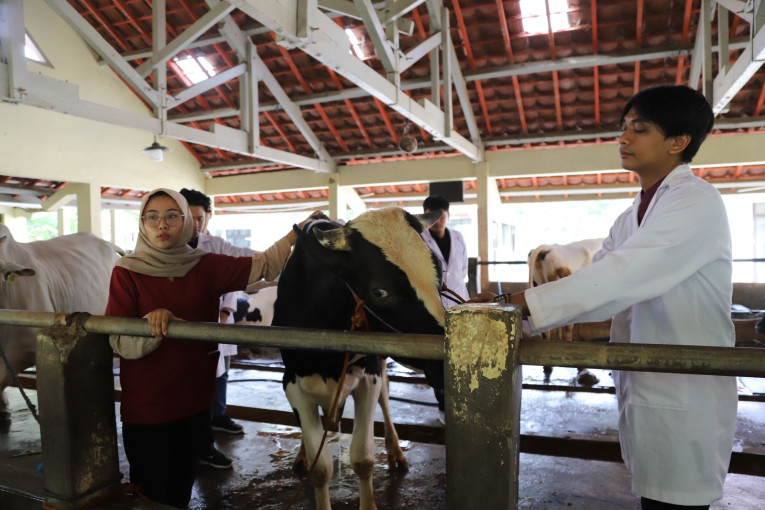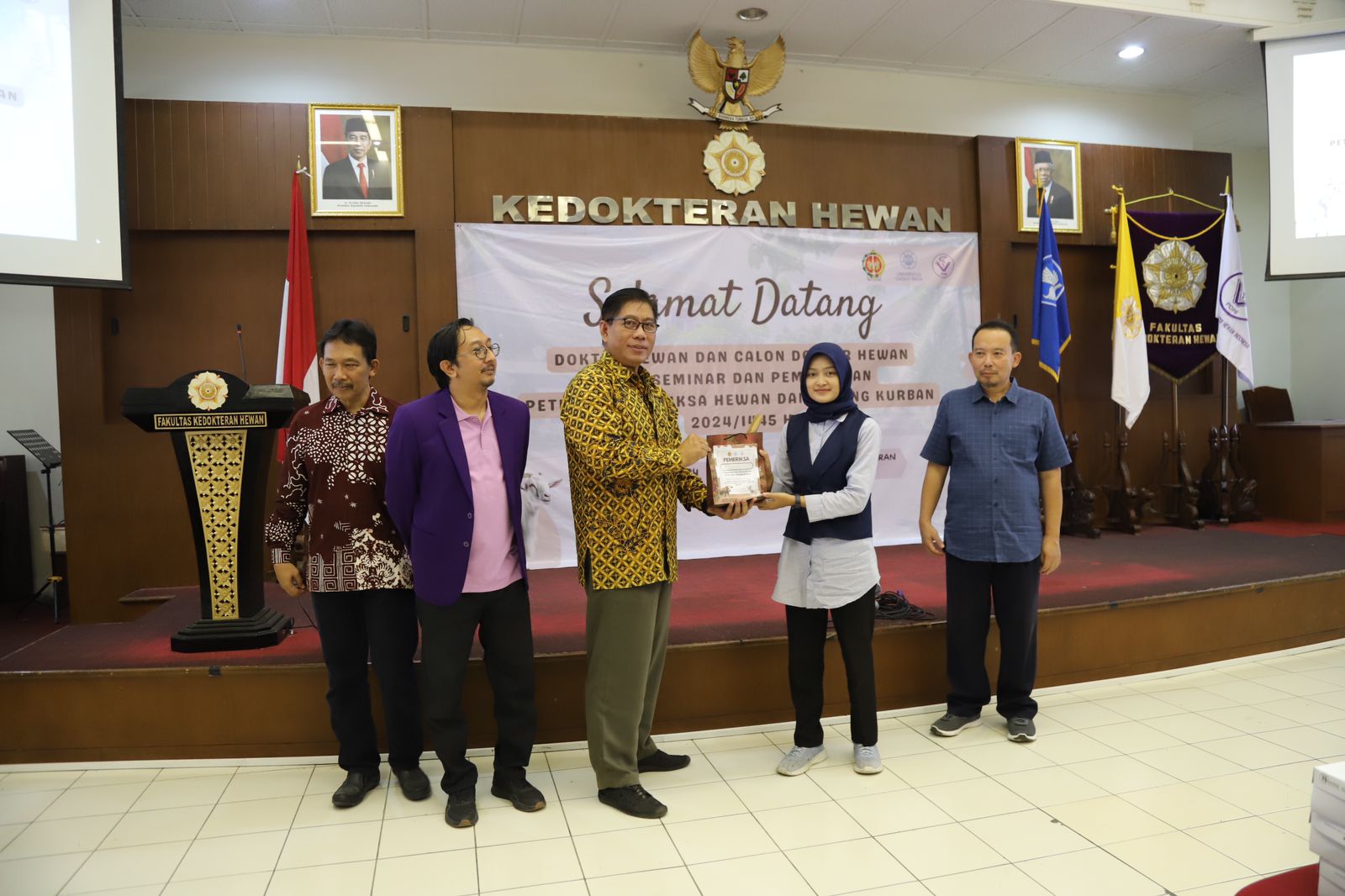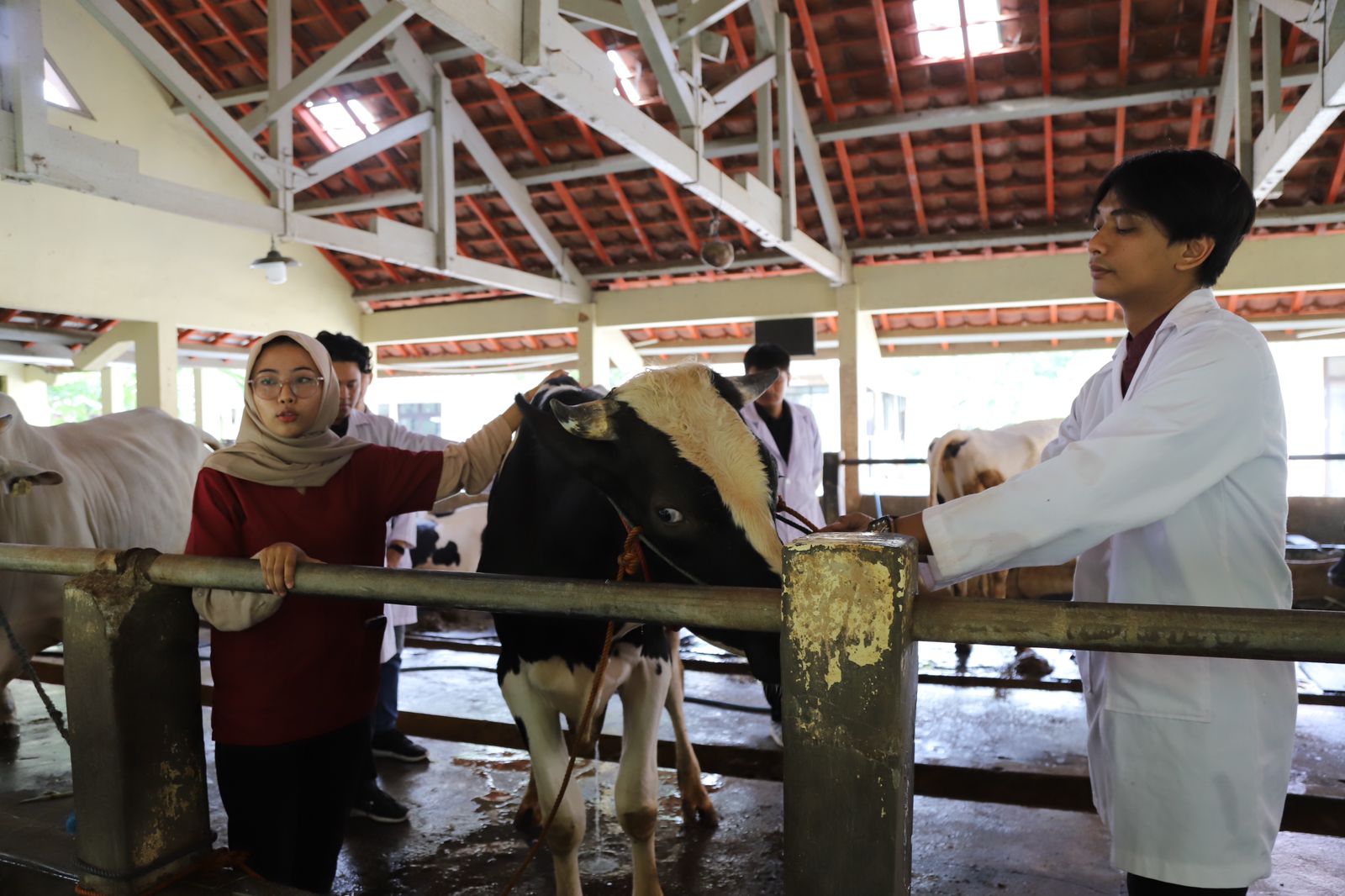The UGM Faculty of Veterinary Medicine (FKH UGM) has deployed 350 students and alumni as Qurbani animal inspectors across all regencies and cities in the Yogyakarta Special Region (DIY).
The symbolic release of these inspectors was marked by the handover of animal inspection tools by the Vice Dean for Research, Community Service, Cooperation, and Alumni Affairs of FKH UGM, Professor Aris Haryanto, to one of the students, witnessed by the Yogyakarta Head of the Agriculture and Food Security Office (DPKP), R. Hery Sulistio Hermawan, on Sunday (Jun 9).
Professor Haryanto stated that the deployment of Qurbani animal inspectors is part of FKH UGM’s contribution to assisting the government in ensuring all Qurbani animals are healthy and fit for consumption before the slaughtering process during Eid al-Adha.
“Before Eid al-Adha, the government needs many Qurbani animal inspectors. FKH UGM, which educates future veterinarians, deploys final-year and clinical rotation students as Qurbani animal inspectors,” Professor Haryanto told reporters.
Professor Haryanto explained that these students would be placed in four regencies and cities in DIY. The presence of these Qurbani animal inspectors is expected to help mosque committees ensure that the animals being slaughtered are genuinely healthy and halal.
“Additionally, they will assist the Agriculture Office in ensuring that the Qurbani animals are healthy, giving the public confidence in consuming Qurbani meat,” he added.
According to Professor Haryanto, FKH UGM students’ participation as Qurbani animal inspectors allows them to apply their knowledge and skills in the field.
“For students, this will certainly enhance their competence in inspecting Qurbani animals before and after slaughter to ensure they are truly healthy and hygienic,” he said.
Hery Sulistio Hermawan expressed his appreciation for FKH UGM’s assistance in monitoring the Qurbani animal slaughtering process during Iduladha.
In addition to collaborating with FKH UGM, Hermawan stated they are coordinating with regency/city offices to involve 1,400 veterinary officers. This is part of an effort to provide public safety and prevent zoonotic disease transmission.
“From FKH UGM, about 350 students are involved, collaborating with PDHI. They deploy 180 veterinarians to inspect Qurbani animals before and after slaughter,” he explained.
Hermawan mentioned that an average of 78,000 Qurbani animals are slaughtered annually during Eid al-Adha, including cows, goats, sheep, and buffaloes.
Regarding the potential diseases that need to be anticipated in Qurbani animals in DIY, Hermawan highlighted three zoonotic diseases that require attention from Qurbani animal inspectors: anthrax, Lumpy Skin Disease (LSD), and Foot-and-Mouth Disease (FMD).
“To anticipate this, we urge that at sales locations, markets, and livestock breeding areas, if there are sick animals or sudden deaths, report immediately to the authorized veterinarian or the nearest health center for prompt inspection and handling,” he advised.
Ana Nida Firdaus (22), one of the Qurbani animal inspectors, shared her motivation for becoming an inspector to help ensure that Qurbani meat is genuinely fit for consumption.
“We also ensure that the Qurbani animals meet the requirements for slaughter and that the public is protected from zoonotic diseases,” she explained.
Author: Gusti Grehenson





